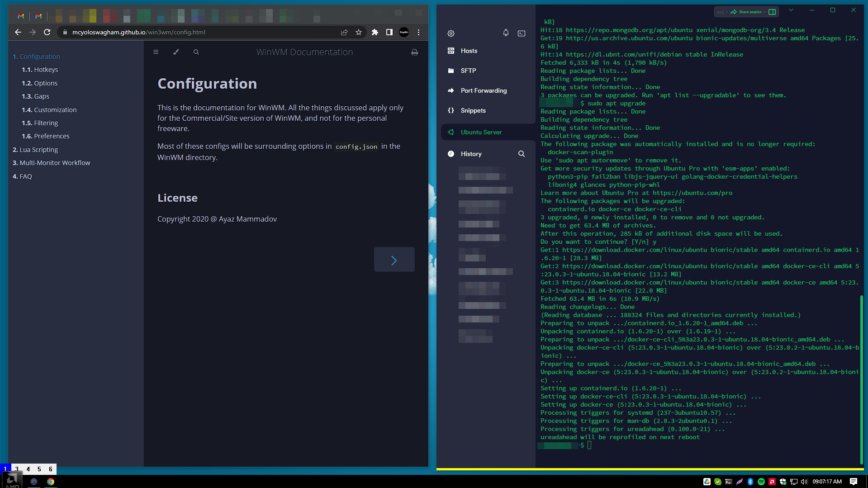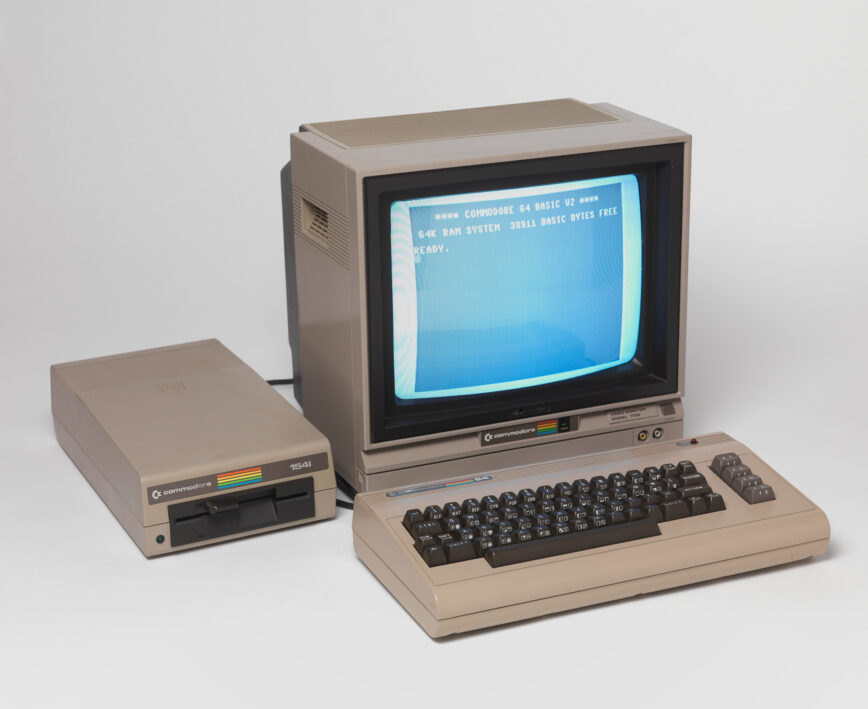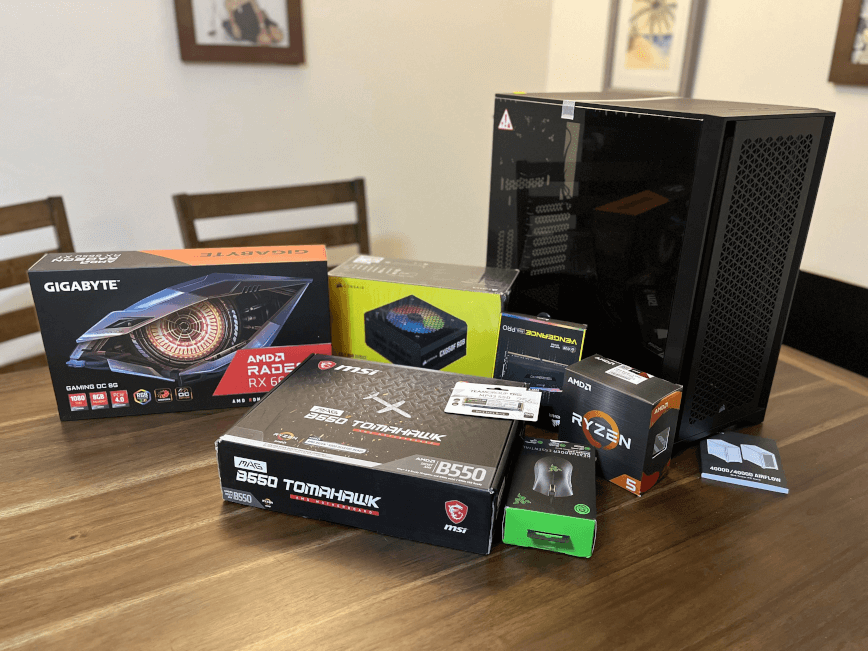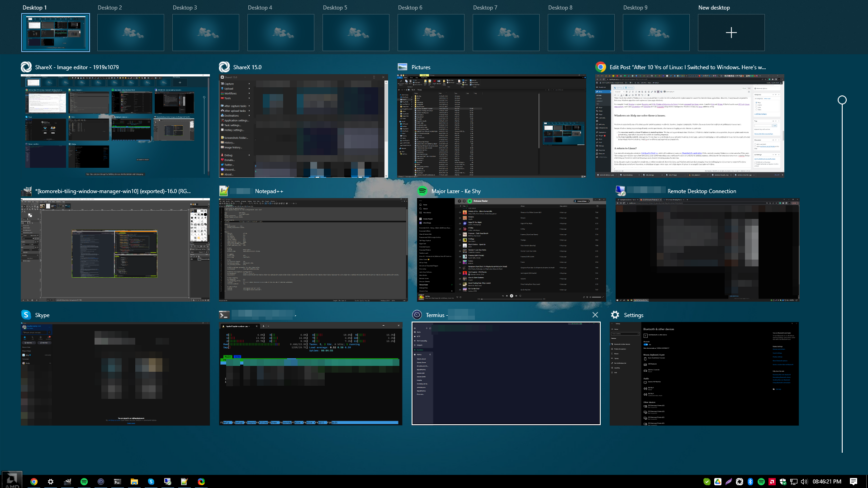

After 10 Yrs of Linux, I Switched to Windows. What next?
source link: https://haydenjames.io/10-yrs-of-linux-switched-to-windows-what-next/
Go to the source link to view the article. You can view the picture content, updated content and better typesetting reading experience. If the link is broken, please click the button below to view the snapshot at that time.

After 10 Yrs of Linux, I Switched to Windows. What next?
I’m looking forward to hearing from experienced Windows users who also use Linux and learning some tips on enhancing my experience on Windows 10 and 11.
As a Linux user, you may wonder why someone would ever consider replacing it with Windows. Be nice! It is always valuable to explore how well competing operating systems work. Additionally, being proficient in Windows, Mac and Linux can be extremely useful, particularly in a professional setting. But that’s another topic.
In this article, I will be sharing my experience in switching to Windows 10 as my daily OS, including how I found suitable replacements for some of the Linux apps I use regularly and how I integrated WSL (Windows Subsystem for Linux) into my workflow for command-line Linux access.
In addition, I will also share my thoughts on the pros and cons of using Windows 10 as my primary operating system and how it compares to Linux. Although I’m excited to share my experiences and insights, please remember that this article is a work in progress.
Over the coming weeks, I will add updates with additional details, screenshots, and other helpful information that I learn along the way and from readers.

Windows 10 + Win3WM tiling Window manager with 6 workspaces (desktops) open.
My Windows-to-Linux Journey
Before my recent switch back to Windows, I had been a Linux user for well over a decade. However, my journey with computers and operating systems began long before that. I had the opportunity at a young age to play around with the Commodore 64, Amiga 500, Apple Macintosh and Atari 2600.

Commodore 64 – The Best-Selling PC of All Time (Image: interface-experience)
However, I started the personal computer journey with MS-DOS in the early to mid-’90s, then Windows 98, which was my most serious experience with a graphical user interface. I remember spending hours customizing the desktop and exploring the various features and applications.
As my computing needs grew, I upgraded to Windows NT, which was released in July 1993. This version of Windows was designed for business use and offered improved stability, security, and networking capabilities. I used Windows NT for several years, and it served me well for my work-related tasks.
In 2001, Microsoft released Windows XP, which quickly became the most popular version of Windows. It offered improved performance, security, and multimedia capabilities and was well-suited for both home and business use. I used Windows XP for several years and appreciated its stability and versatility.
Microsoft released Windows 7 in 2009, which was a significant improvement over its predecessor, Windows Vista. Windows 7 offered better performance and an even more user-friendly interface. It quickly became my go-to operating system for both work and personal use. Like many of you, I spent a lot of years on Windows 7.
During this time, I was tasked with managing IIS 5 to 7 on Windows Server 2000 to 2008, which was an unfortunate responsibility. So back then, while managing a few of my websites on IIS 7, I faced many performance and scaling issues.
Fortunately, I came across alternative servers like Apache, Lighttpd, and Nginx that run on Linux, particularly on Debian and Ubuntu. This provided higher throughput and improved website performance.
Overall, Linux offered more flexibility, security, performance, and customization, and I used various Linux distributions for both servers and desktops.
Back to Windows. But why?

Parts/hardware for < $1000 PC build. Use this Part list and adjust it as needed.
Windows and Linux are two of the most popular operating systems used by individuals and businesses alike – Apple licenses mosOS to their own hardware. Both have their strengths and weaknesses and the choice of which one to use depends on the user’s needs and preferences. For my requirements, here are some of the pros and cons of using Windows instead of Linux as my daily OS.
Pros of using Windows
- User-Friendly (or rather user-familiar): Windows has a familiar graphical user interface that is pretty straightforward.
- Gaming: Windows is the preferred choice for gamers due to its compatibility with the majority of games available in the market.
- Hardware compatibility: Windows is compatible with almost all hardware and software available in the market.
- Microsoft Office: Microsoft Office Suite is a productivity tool that is widely used in business and personal settings.
Cons of using Windows
- Cost: Windows is a commercial operating system, and it comes at a price.
- Security: Windows is more susceptible to malware and virus attacks than Linux.
- Bloatware: Windows comes with pre-installed apps that are not necessary for many users and can slow down the system.
- Privacy: Windows collects a significant amount of user data, and there are concerns about privacy.
Pros of using Linux
- Free and Open-Source: Linux is a free and open-source OS that can be downloaded, installed, and used without any cost.
- Customizable: Linux is highly customizable, and users can modify the source code to suit their needs.
- Security: Linux is much less susceptible to malware and virus attacks than Windows.
- Speed: Linux is faster and more efficient than Windows.
Cons of using Linux
- Compatibility: Linux is not as compatible with all hardware and software available in the market.
- Steeper learning curve: Linux can be more challenging to use than Windows, especially for new users who are unfamiliar with the command line and the plethora of desktop environments and window managers available.
- Gaming: Gaming support for Linux is limited compared to Windows.
- Cloud syncing – Other than Ubuntu, most Linux distros lack out-of-the-box cloud sync features to rival Apple’s iCloud, Microsoft’s Onedrive, or Google Drive.
Windows 10 is an operating system that most users are familiar with, and it has excellent hardware and software compatibility, making it a popular choice for many users. On the other hand, Linux is a free and open-source operating system with excellent performance, privacy and security features, as well as insane levels of customizability.
As a long-time Linux user, I have been using various distributions over the past decade, including Arch, Ubuntu, Mint, Kali, Debian, Fedora, Manjaro, and more.
With these pros and cons in mind, I decided to switch back to Windows at the end of last year. Specifically Windows 10. I wanted to explore the possibility of using Windows daily and try to take advantage of better hardware support for a new PC build that would double as a gaming PC; in hopes of reviving the gamer in me.
My PC build included an AMD Ryzen 5 processor, the MSI MAG B550 TOMAHAWK motherboard, Gigabyte OC Radeon RX 6650 XT graphics card, and 16GB of Corsair Vengeance DDR4-3600 CL16 memory. Switching to Windows 10 as my primary operating system was a significant change for me! Here’s what the build looks like currently:

Most LEDs are either off or solid white. (View larger)
The reason I opted for Windows over Linux here was primarily because of the arguably better AMD driver support, which allowed me to get the most out of the hardware. Or, at the very least be able to set a baseline for later Linux tests.
While Linux has made significant strides in this area, Windows generally works better with AMD and Nvidia GPUs. This is expected because with millions more end-users running AMD and Nvidia hardware on Windows, it allows, in general, a more stable and performant experience.
Additionally, rather than jump straight to a dual boot setup, I wanted to explore the possibility of using Windows exclusively on my desktop work PC and how it would compare to Linux.
Windows as a Daily OS

Komorebi tiling window manager on Windows 11. (Source: /r/UsabilityPorn)
Firstly, why I opted to install Windows 10 and not 11? Well, I was after the highest possible stability and a low frequency of Windows Updates.
When I made the switch to Windows 10, I was concerned that I wouldn’t be able to find suitable replacements for some of my favorite Linux applications. However, I was pleasantly surprised to find many Windows apps that could replace my Linux apps effectively.
For example, I used Termius to replace Remmina and WSL (Windows Subsystem for Linux) to have command-line Linux access. I installed Kali and Debian WSLs to launch some GUI-only Linux apps natively, and I used AutoHotkey and Win3WM (but also komorebi tiling window manager) for Windows to keep my i3wm addiction at bay.
Issues I’m having with Windows 10

Default Windows 10 “task view” is cluttered and mouse-dependant.
Windows is undoubtedly one of the most popular operating systems worldwide. However, despite its popularity, Windows has some issues that might prove problematic to some users. So I’m looking forward to hearing from others who have been using both Windows and Linux over the years to improve my experience on Windows.
Despite Windows having improved significantly over the past decade, a few issues are bugging me a lot, two in particular.
- The constant need to reboot Windows to install updates. This has not improved much since Windows 7. While it is vital to keep the system up to date, frequent updates and restarts is frustrating, especially if you are in the middle of something important.
- The User Interface (UI) / workflow. Although the UI was closer to i3wm thanks to some 3rd party tweaking, it was buggy, making it challenging to work seamlessly at times. So I eventually reverted to the default Windows desktop, which was not as efficient and impacted my productivity.
A return to Linux?
Regarding my main/daily OS, I am currently awaiting the arrival of a WD BLACK 1TB SN770, which will enable me to move my TEAMGROUP 256GB MP33 NVMe, which is currently running Windows 10, to the secondary PCIe 3 slot.
This arrangement will allow me to boot into Linux as my default operating system and keep Windows 10 available for gaming purposes, which thus far has been about once every 2 months, further strengthening a decision to switch back to Linux as my primary OS for daily use.
So far, the past couple of months have taught me, or rather reconfirmed, that while Linux and Windows each have their strengths, it can be challenging for a Linux user to return to Windows. Linux offers great control over the system, an abundance of open-source apps, and a high degree of options to accomplish your tasks and wishes.
Should I stick with Windows?
I’m still writing this article on my Windows 10 work PC. So, it’s not too late for me to find solutions to the aforementioned issues. What do you think? Am I giving up too soon? Any suggestions for improving my Windows experience? What techniques do you use to accelerate your workflow and productivity on Windows?
Or, return to Linux?
While I wait for the NVMe boot drive to arrive, I’ve been trying to decide which flavor of Linux I should go with. Currently, I’ve narrowed the list down to: Kali-i3 (rolling-release no-pentest tools), Debian 12, Arch + xfce4 + i3 or Manjaro-i3. Any other suggestions? What are you guys running on your desktops and PC builds?
To be continued…
I will amend this article with my final decision. Follow updates here.
Recommend
About Joyk
Aggregate valuable and interesting links.
Joyk means Joy of geeK